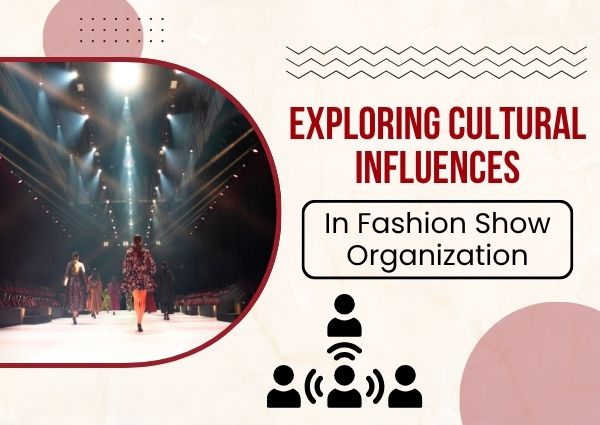At Babla Kathuria, we believe that every fashion show is a story waiting to be told, and culture is often the most powerful storyteller. In this blog, we explore how cultural elements influence fashion show organization and why embracing them leads to richer, more engaging productions.
1. Culture Shapes Concept And Theme
Every fashion show starts with a creative concept—and many of the strongest ones are rooted in cultural heritage or contemporary social movements.
- A collection inspired by Japanese minimalism may adopt a Zen theme with a clean runway design and ambient music.
- Indian couture shows often incorporate themes from mythology, royal history, or festivals like Diwali.
- African designers might celebrate tribal roots through bold prints and traditional dance-infused choreography.
The culture behind the collection often dictates everything from mood boards to stage props. A culturallygrounded theme provides depth and emotional resonance, making the show not just a display—but a journey.
2. Venue And Decor Reflect Local Identity
The location and setup of a fashion show often reflect the designer’s cultural inspiration.
- A show inspired by Rajasthani heritage might be hosted in a palace courtyard.
- A sustainable fashion show might use eco-friendly materials and open-air gardens influenced by indigenous traditions.
- Urban-themed collections might take place in warehouse-style venues with graffiti walls, echoing youth subcultures.
At Babla Kathuria, we’ve helped brands stage fashion shows in locations that bring their cultural essence to life, reinforcing the designer’s narrative at every level.
3. Music As a Cultural Connector
Music is a powerful cultural marker, and its use in fashion shows can transform the energy of the entire event.
- Traditional instruments like the sitar, tabla, djembe, or didgeridoo can add authenticity.
- Remixing classical cultural songs into electronic beats bridges old and new.
- Regional languages, chants, and folk sounds give an immersive experience to the audience.
We often collaborate with musicians to craft soundtracks that are culturally layered, turning fashion shows into emotionally charged performances.
4. Choreography Influenced By Cultural Movement
Fashion choreography doesn’t happen in a vacuum. The way models walk, pose, and move on the runway is often influenced by cultural expressions of beauty and poise.
- Indian-inspired shows may include elements of classical dance like Bharatanatyam hand gestures or temple-like slow turns.
- Latin American themes might incorporate a samba bounce or flamenco twist.
- Streetwear collections might reflect hip-hop or breakdance-infused transitions.
At Babla Kathuria, we don’t just choreograph—we embody culture through movement. Every step is tailored to enhance the story of the garments being presented.
5. Costume And Styling Rooted In Heritage
Cultural identity doesn’t stop at the outfit—it extends to styling elements like:
- Bindi, turbans, or indigenous headdresses
- Jewelry like nose rings, anklets, or tribal bangles
- Henna tattoos, face paints, or ceremonial makeup styles
These choices are not just aesthetic—they are symbolic. When done respectfully, they honor the community and history they come from, making the fashion show more meaningful.
6. Inclusivity And Representation
Culturally inspired shows must also address representation. Fashion shows today are platforms for celebrating diversity, and that includes:
- Casting models from different ethnic backgrounds
- Incorporating multilingual show scripts or announcements
- Collaborating with local artisans or craft communities
True cultural integration is more than surface-level—it’s about giving credit, voice, and visibility to those whose stories are being told.
7. Bridging Tradition With Innovation
Cultural influence doesn’t mean staying in the past. The best fashion shows reimagine traditions through a modern lens.
- A classic Banarasi weave presented in a futuristic silhouette
- Traditional embroidery glowing under UV lights
- Folk stories visualized using augmented reality
At Babla Kathuria, we love helping brands blend cultural roots with cutting-edge tech—because innovation is stronger when it grows from heritage.
8. Avoiding Cultural Appropriation
While culture can enrich fashion shows, it also comes with responsibility. Misusing or misrepresenting cultural elements can lead to backlash.
- Always research the cultural significance of motifs, rituals, and symbols.
- Collaborate with cultural experts or representatives.
- Avoid using sacred or sensitive cultural symbols for decorative purposes.
- Give credit where it’s due—especially to local artisans and contributors.
Respect is the foundation of authenticity.
At Babla Kathuria, we pride ourselves on designing fashion shows that don’t just look stunning—they speak to the soul. Whether rooted in tradition or inspired by global fusion, we choreograph every element with cultural integrity, creativity, and excellence.

